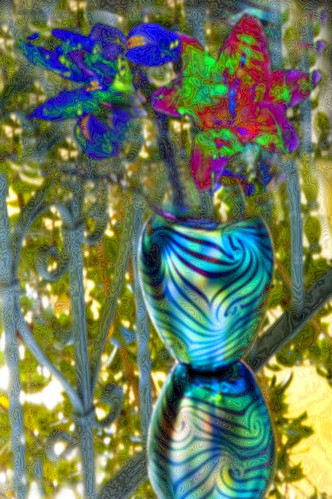I like saying that digital photography is a cyborg: one part photography and one part computer. To be a good digital photographer, you should be skilled at both parts of the cyborg’s personality.
Photography, of course, is performed with a digital camera–and to a great extent (at least until camera manufacturers stop copying film cameras when they design their digital cameras) the principles are the same as film photography. See The Evolution of Photography for my thoughts on how digital cameras could become, well, more like computers, and less like cyborgs with split personalities.
The computer is used for post-processing the photograph, usually in Photoshop or Photoshop Elements. See related posts: Processing a Photo for Flickr and Processing a Digital Photo.
In the hands of a master, most people won’t even know the photograph has been manipulated. By the way, there’s nothing wrong with post-processing, and it is truly analogous to manipulating a conventional photo in the print making process. There’s no evil to image manipulation, there’s only good taste and bad taste. Taste is always debatable, and the subject of a different story.
As opposed to photos that don’t show that they’ve been manipulated, anyone can tell that my picture of a dreamy vase that accompanies this story was largely made in Photoshop. It is an obvious. A true cyborg.
Related post: Would Ansel Like Digital?

Pingback: Photoblog 2.0: » Photoblog 2.0 Archive: » My First Look at the Nikon D200